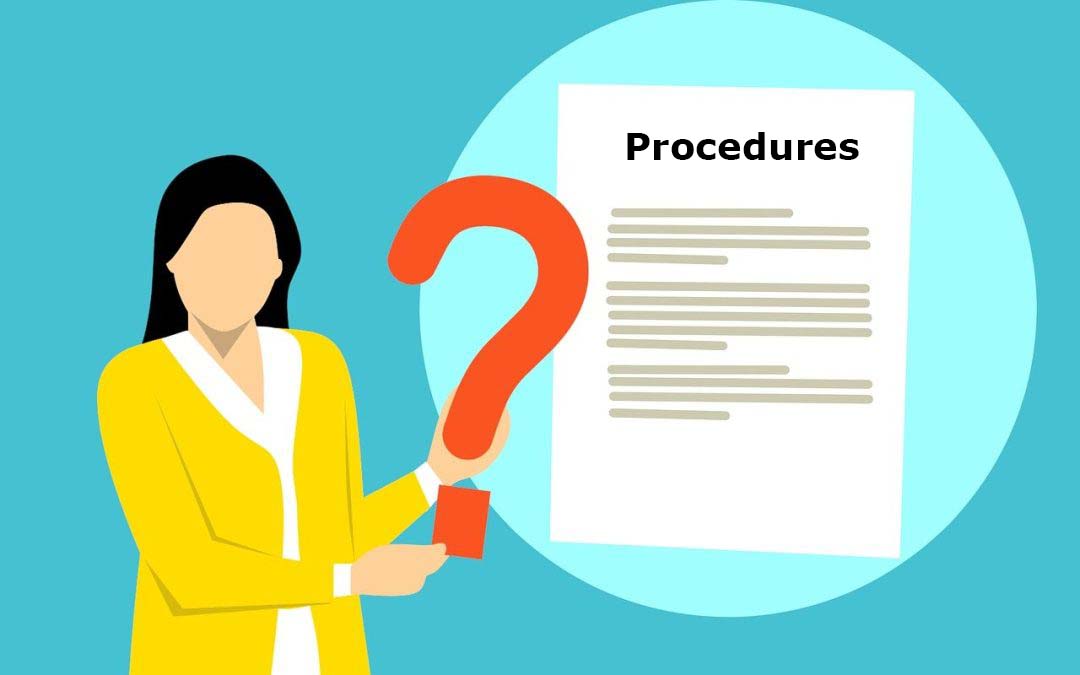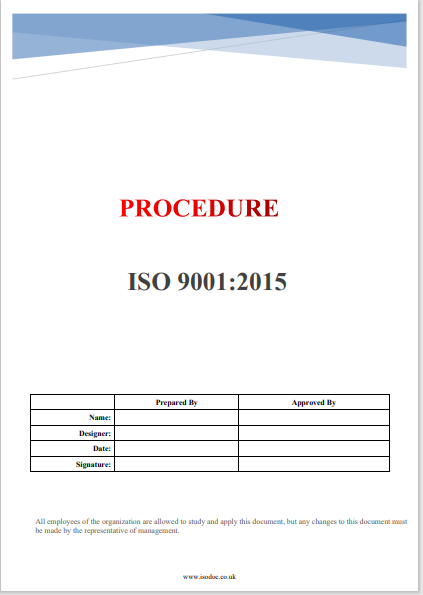ISO 9001 procedures download
Looking to enhance your organization’s quality management system? Explore our platform’s offerings, including ISO 9001 procedures download. With our easy-to-access resources, you can streamline the implementation of standardized processes and propel your business toward ISO 9001 certification. Take advantage of our downloadable procedures to expedite your journey to quality excellence.
Why are our ISO 9001 procedures useful?
|
Our downloadable ISO 9001 procedures empower organizations of all sizes, from small businesses to large corporations, to establish and implement effective quality management systems (QMS) seamlessly. With our comprehensive toolkit, achieving your quality goals becomes attainable, regardless of your organization’s scale or industry. Our user-friendly procedures and documents are designed to guide you through every step of the ISO 9001 certification process, ensuring compliance with international quality standards. By utilizing our downloadable resources, you can streamline the implementation of your QMS, enhance operational efficiency, and demonstrate your commitment to quality excellence. Experience the flexibility and adaptability of our ISO 9001 procedures today, and pave the way for success in quality management, no matter the size or nature of your business |

What is the ISO 9001 procedure?
ISO 9001 procedures refer to documented steps or processes outlined within an organization to ensure compliance with the ISO 9001 quality management system standards. These procedures are designed to establish a systematic approach to various activities within the organization, such as quality control, risk management, corrective actions, internal audits, and continuous improvement. ISO 9001 procedures help ensure consistency, efficiency, and adherence to quality standards across different departments and functions within an organization. They are essential for achieving and maintaining ISO 9001 certification, demonstrating a commitment to quality management practices.
ISO 9001 procedures downloadLooking for an example of ISO 9001 procedures? On our website, you have the opportunity to freely download samples of ISO 9001 documents, such as procedures, instructions, and forms, all meticulously crafted in Word format. |
what are the ISO 9001 mandatory procedures?
ISO 9001:2015 does not prescribe a specific list of mandatory procedures. Instead, it provides guidance on the documentation requirements necessary for establishing and maintaining an effective quality management system (QMS). The standard emphasizes the importance of documentation that is necessary for the organization’s operation and the effective planning, operation, and control of its processes.
However, while ISO 9001:2015 does not mandate specific documents, it does require organizations to maintain certain types of documented information to demonstrate the conformity of their QMS and ensure effective operation and control. Here’s a general category list of the types of documents and records commonly found in ISO 9001-compliant QMS:
Quality Manual: Although not mandatory, many organizations choose to create a quality manual that provides an overview of the QMS, including its scope, objectives, and key processes.
Process Documentation: Documents describing the processes within the QMS, such as procedures, work instructions, flowcharts, and process maps.
Policy Documents: Documents outlining the organization’s quality policy, objectives, and related policies and directives.
Records of Training and Competence: Records demonstrating the competence of personnel performing tasks affecting product or service quality, including training records, qualifications, and certifications.
Internal Audit Records: Records of internal audits, including audit plans, audit reports, findings, and corrective actions taken.
Management Review Records: Records of management review meetings, including agendas, minutes, and action plans resulting from the review.
Documented Information Control: Records related to the control of documented information, such as document control procedures, document registers, and records of document revisions.
Nonconformity and Corrective Action Records: Records of nonconformities, corrective actions taken, and their effectiveness.
Customer-related Documentation: Records of contracts, orders, and agreements with customers, as well as records of customer feedback, complaints, and satisfaction.
Design and Development Documentation: Records related to product or service design and development, including design inputs, outputs, reviews, and verification/validation activities.
Production and Service Provision Records: Records related to the production or provision of products or services, such as inspection records, test results, and production logs.
Calibration and Maintenance Records: Records of equipment calibration, maintenance activities, and equipment status.
It’s essential for organizations to determine the documentation necessary for their specific context and needs while ensuring compliance with ISO 9001 requirements. The documentation should be appropriate, proportionate to the organization’s size and complexity, and effectively support the operation and improvement of the QMS.
Download training procedure forms for free |
What is the structure of the ISO procedure?
The structure of an ISO procedure typically follows a standardized format to ensure clarity, consistency, and compliance with ISO standards. While specific organizations may customize their procedures to suit their unique needs, a typical ISO procedure often consists of the following elements:
-
Title: Clearly indicates the name or title of the procedure, providing a concise description of its purpose.
-
Scope: Defines the scope or applicability of the procedure, specifying the processes, departments, or activities to which it applies.
-
Purpose/Objective: Outlines the purpose or objective of the procedure, explaining why it is necessary and what outcomes are expected.
-
References: Lists any references to relevant documents, standards, regulations, or other sources of information that are pertinent to the procedure.
-
Definitions: Provides definitions of key terms or terminology used within the procedure to ensure common understanding and clarity.
-
Responsibilities: Specifies the roles and responsibilities of individuals or departments involved in carrying out the procedure, including who is responsible for initiating, approving, executing, and monitoring activities.
-
Procedure Steps: Describes the sequential steps or actions to be taken to complete the procedure, often presented in a clear and concise manner using numbered or bulleted lists.
-
Forms and Records: Identifies any forms, templates, or records associated with the procedure, specifying their purpose, format, and where they can be found.
-
Monitoring and Measurement: Outlines how the effectiveness of the procedure will be monitored, measured, and evaluated to ensure compliance and continual improvement.
-
Documentation Control: Describes the procedures for document control, including how documents are created, reviewed, approved, revised, distributed, and archived.
-
Training and Competence: Specify any training requirements or competency criteria necessary for personnel involved in executing the procedure effectively.
-
Risk Management: Addresses any risks associated with the procedure and outlines measures for identifying, assessing, and mitigating these risks.
-
Change Control: Describes the process for managing changes to the procedure, including how changes are initiated, evaluated, approved, and implemented.
-
Records Management: Specifies how records generated during the execution of the procedure will be managed, including storage, retention, and disposition requirements.
-
References to Supporting Documents: Includes references or hyperlinks to any supporting documents, forms, work instructions, or related procedures that provide additional guidance or information.

Writing an ISO 9001 procedure involves following the guidelines set forth in the ISO 9001 standard for quality management systems. Here’s a step-by-step guide to help you write an ISO 9001 procedure:
-
Identify Process Requirements: Review the ISO 9001 standard and identify the specific requirements relevant to the process or activity for which you’re creating the procedure. Pay attention to clauses related to planning, resource management, product realization, measurement, analysis, and improvement.
-
Define Scope and Objectives: Clearly define the scope of the procedure, including the processes, activities, and personnel it applies to. Identify the objectives of the procedure, such as ensuring product quality, meeting customer requirements, and enhancing customer satisfaction.
-
Establish Process Flow: Map out the process flow, including all key steps, inputs, outputs, and interactions with other processes. Use flowcharts, diagrams, or process maps to visualize the sequence of activities and decision points.
-
Document Procedure Details: Document the procedure in a structured format, following the organization’s documentation requirements. Include headings, numbering, or bullet points to organize the content logically. Provide detailed instructions, responsibilities, and references to relevant documents or records.
-
Include Controls and Measures: Incorporate controls, measures, and criteria to ensure the effective implementation of the procedure and compliance with ISO 9001 requirements. This may include process monitoring, product inspection, testing, validation, and verification activities.
-
Address Risk-Based Thinking: Consider risks and opportunities associated with the process and incorporate risk-based thinking into the procedure. Identify potential risks, assess their impact, and define mitigation measures to minimize adverse effects on product quality or customer satisfaction.
-
Document Records and Documentation Control: Specify requirements for documenting records and controlling documentation related to the process. Define recordkeeping procedures, document formats, approval processes, and version control mechanisms to ensure the traceability and integrity of records.
-
Review and Approval: Review the procedure with relevant stakeholders, including process owners, employees, and management. Obtain feedback and approval to ensure accuracy, completeness, and alignment with organizational objectives and ISO 9001 requirements.
-
Implement and Communicate: Implement the procedure within the organization and communicate it to relevant personnel. Provide training as necessary to ensure understanding and compliance with the procedure.
-
Monitor and Measure Performance: Establish mechanisms for monitoring and measuring process performance against defined objectives and criteria. Collect data, analyze results, and take corrective actions as needed to maintain or improve process effectiveness and efficiency.
-
Review and Continual Improvement: Regularly review the procedure to ensure its ongoing suitability, adequacy, and effectiveness. Identify opportunities for improvement and implement changes to enhance the efficiency and effectiveness of the process.
-
Internal Audit and Management Review: Conduct internal audits to verify compliance with the procedure and ISO 9001 requirements. Review procedure performance during management review meetings and make necessary adjustments to support organizational goals and objectives.
By following these steps, you can develop ISO 9001 procedures that support your organization in achieving quality objectives, meeting customer requirements, and continually improving processes in line with ISO 9001 standards.

